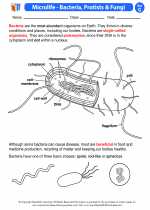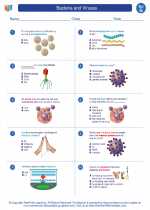Feedback Mechanisms
Feedback mechanisms are processes that help maintain the stability of a system by regulating the output of the system. In biological systems, feedback mechanisms play a crucial role in maintaining homeostasis, which is the stable internal environment necessary for the proper functioning of the body.
Types of Feedback Mechanisms
There are two main types of feedback mechanisms:
- Negative Feedback: This type of feedback mechanism works to maintain stability and keep the system within a normal range. When the system deviates from the normal range, negative feedback mechanisms work to bring it back to the set point. For example, in the regulation of body temperature, when the temperature rises above the set point, negative feedback mechanisms induce sweating to lower the temperature back to the normal range.
- Positive Feedback: In contrast, positive feedback mechanisms amplify the deviation from the normal range, pushing the system further away from the set point. This type of feedback is less common in biological systems and is typically associated with processes that need to be quickly completed, such as blood clotting and childbirth.
Examples of Feedback Mechanisms
Here are some examples of feedback mechanisms in the human body:
- Thermoregulation: When the body temperature rises, sweat glands are stimulated to produce sweat, which cools the body through evaporation. When the body temperature drops, shivering is triggered to generate heat, bringing the temperature back to the normal range.
- Blood Sugar Regulation: After a meal, blood sugar levels rise, leading to the release of insulin, which promotes the uptake of glucose by cells. When blood sugar levels drop, glucagon is released, signaling the liver to release stored glucose into the bloodstream.
- Childbirth: During childbirth, the release of oxytocin stimulates uterine contractions. As the contractions intensify, more oxytocin is released, further increasing the strength and frequency of contractions until the baby is delivered.
Study Guide
Here are some key points to remember when studying feedback mechanisms:
- Understand the difference between negative and positive feedback mechanisms.
- Be able to provide examples of feedback mechanisms in the human body.
- Consider the importance of feedback mechanisms in maintaining homeostasis and the implications of dysfunction in these mechanisms.
It's important to grasp the concept of feedback mechanisms as it has widespread applications in biology and other scientific fields.
By understanding feedback mechanisms, you'll have a better grasp of how living organisms maintain stability and respond to changes in their internal and external environments.
Good luck with your studies!
.◂Science Worksheets and Study Guides Seventh Grade. Bacteria and Viruses

 Activity Lesson
Activity Lesson
 Worksheet/Answer key
Worksheet/Answer key
 Worksheet/Answer key
Worksheet/Answer key
 Worksheet/Answer key
Worksheet/Answer key
 Worksheet/Answer key
Worksheet/Answer key
 Vocabulary/Answer key
Vocabulary/Answer key
 Vocabulary/Answer key
Vocabulary/Answer key
 Vocabulary/Answer key
Vocabulary/Answer key
 Vocabulary/Answer key
Vocabulary/Answer key
